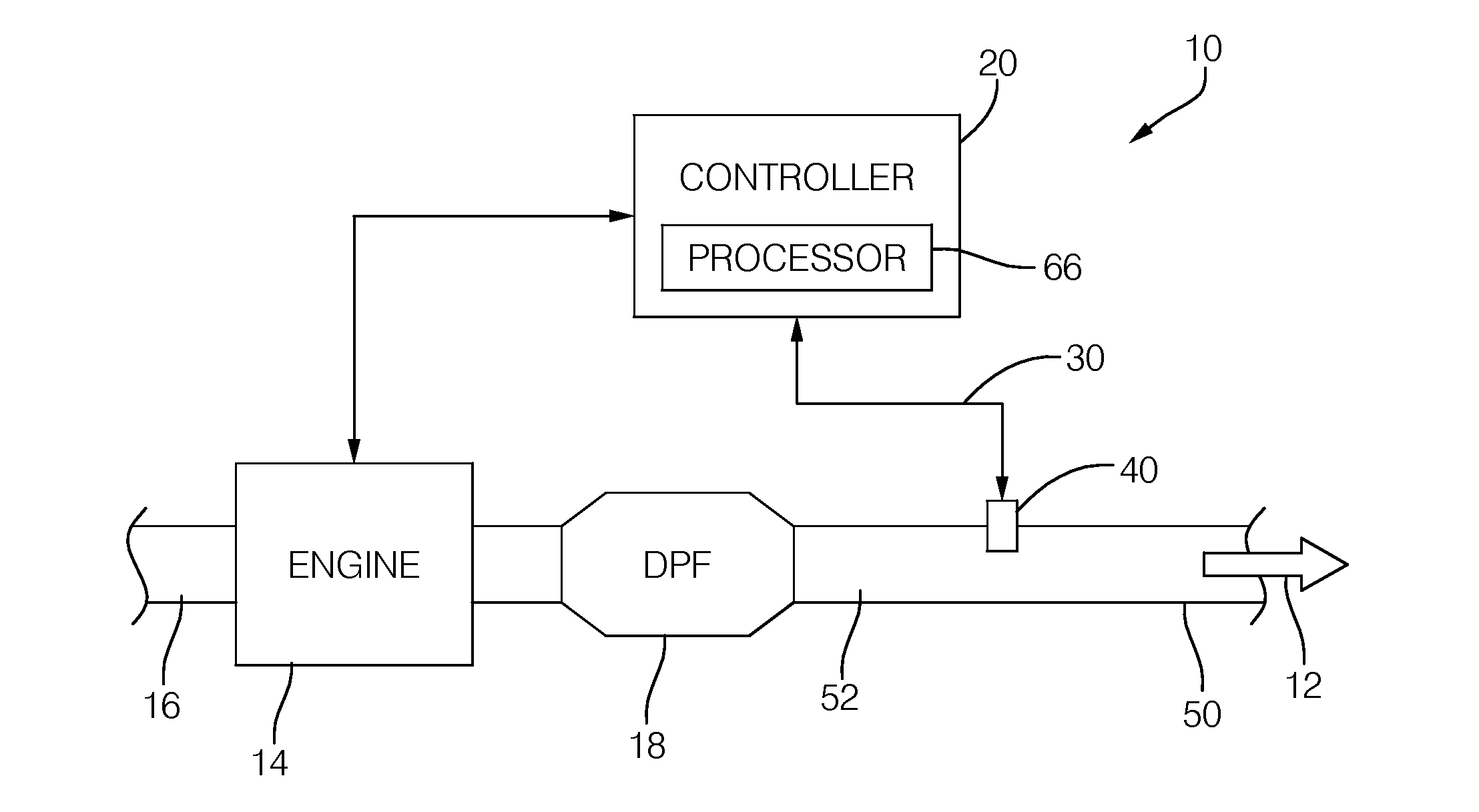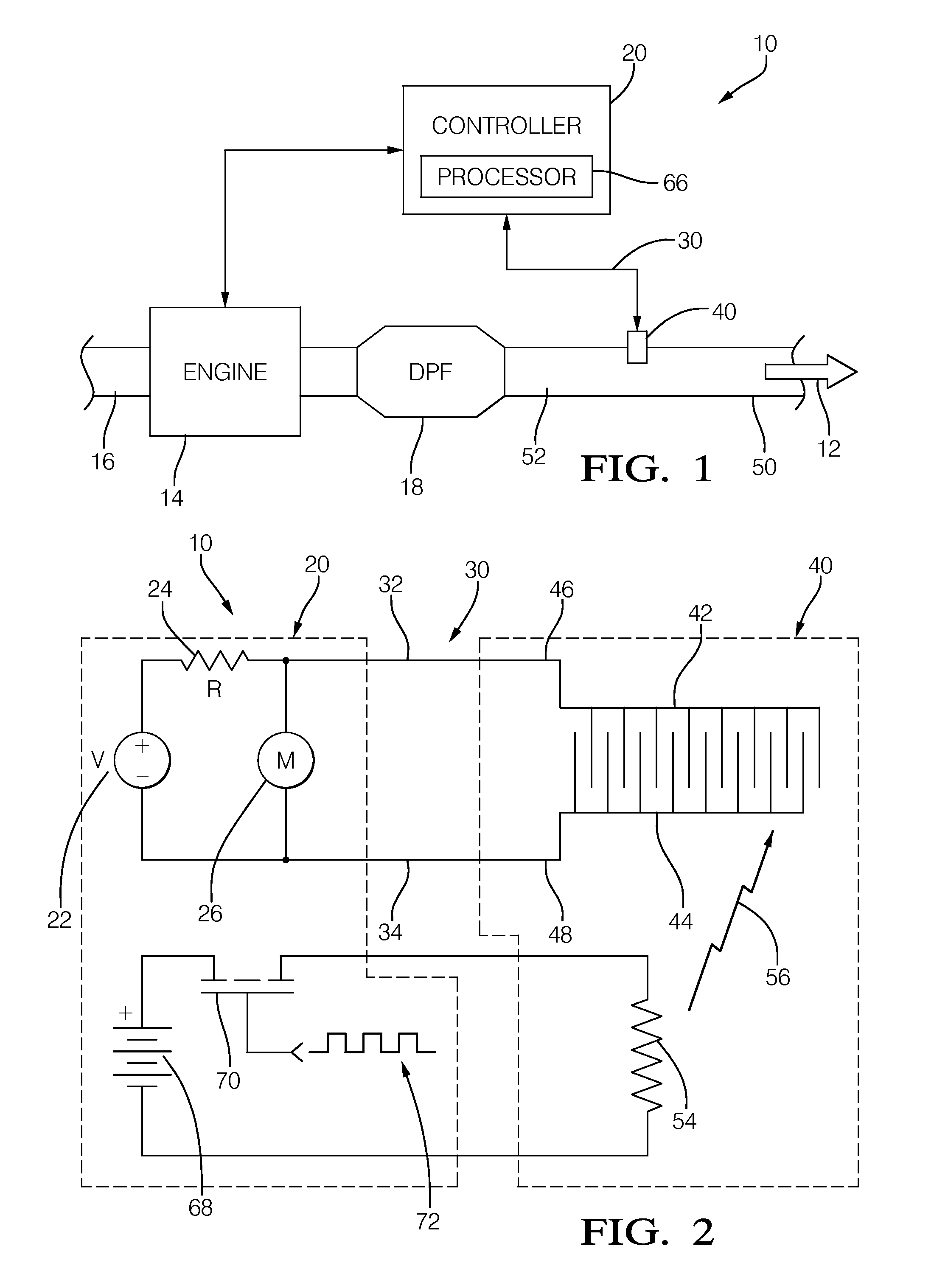Particulate sensor and method of operation
- Summary
- Abstract
- Description
- Claims
- Application Information
AI Technical Summary
Benefits of technology
Problems solved by technology
Method used
Image
Examples
Embodiment Construction
[0014]FIG. 1 illustrates a non-limiting example of a particulate sensing system, hereafter referred to as the system 10. In general, the system is configured to detect particulates in an exhaust gas 12 from a combustion process. In this non-limiting example the combustion process is the operation of an internal combustion engine, hereafter referred to as the engine 14. However, it is recognized that the combustion process could be the burning of coal or other fuels in an industrial oven, boiler, reactor, or the like. The configuration of the engine 14 shown in FIG. 1 is not particularly limited. The engine 14 may include a plurality of cylinders (two or more cylinders, for example, four cylinders or six cylinders) that are arranged in various ways (e.g., in-line or V-type) as will be recognized by those in the art.
[0015]An intake port of the internal combustion engine 14 is in fluidic communication with an intake 16. The intake 16 is provided as needed, for instance, with various pi...
PUM
 Login to View More
Login to View More Abstract
Description
Claims
Application Information
 Login to View More
Login to View More - R&D
- Intellectual Property
- Life Sciences
- Materials
- Tech Scout
- Unparalleled Data Quality
- Higher Quality Content
- 60% Fewer Hallucinations
Browse by: Latest US Patents, China's latest patents, Technical Efficacy Thesaurus, Application Domain, Technology Topic, Popular Technical Reports.
© 2025 PatSnap. All rights reserved.Legal|Privacy policy|Modern Slavery Act Transparency Statement|Sitemap|About US| Contact US: help@patsnap.com



